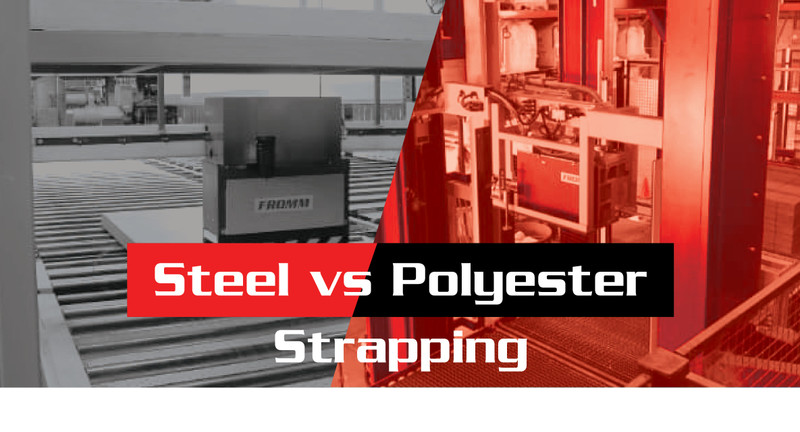Posted by Mike Cunningham on Jan 23rd 2024
Steel and Polyester Strapping and When to Use
Trying to decide whether to use steel or polyester strapping is a difficult task for most plant managers. Steel is strong, but polyester is versatile. Which one is the right choice?
The information here should help you understand the differences between these two strapping materials. With this knowledge in hand, choosing the right option for your application should be simpler and easier.
When to Use Steel vs Polyester Strapping:
You can replace steel strapping with polyester. There are a few scenarios when it makes sense to use steel. A good example is when a load is very heavy and non-compressible. Its strength means it is less likely to give way, especially if the load is stable. Some loads may have sharp edges, which could cut other materials, such as polyester. Steel makes sense in both cases.
In most other cases, you will want to consider polyester strapping. Loads that are likely to settle, contract, or expand are good contenders for polyester straps. Polyester is also a good choice if the load is sensitive to abrasion and devaluation.
Finally, it is a good idea to use polyester when the strapping is being handled by staff with less experience. Steel causes more injuries, so only your most experienced employees should handle it.
Steel and Polyester by the Numbers:
Plant managers often ask about the differences in sizing and strength. Steel comes in several widths, with 2” to 3/8” rolls being the most popular. Polyester commonly comes in 1 ¼” to ½” wide rolls.
Steel’s thickness varies from around 0.015” to 0.044”. Polyester varies from 0.02” to 0.50”. Steel can thus be a little thinner and polyester a little thicker.
Both steel and polyester have a working range of about 50 percent. The difference is in their elasticity and their break strength. Steel has very low elasticity, meaning it does not stretch. It also retains its tension. This makes it ideal for those stable loads.
Polyester, by contrast, is much more elastic. That means it takes up the slack when a load shifts, shrinks, or settles. It is also light-weight and reduces the risk of damage to your product. This makes it a much more versatile material.
Costs of Strapping:
As a plant manager, there is another set of numbers you are concerned with. You want to know the costs involved, so you can effectively compare steel and polyester.
Steel can be quite expensive, especially because the price of the material can fluctuate dramatically.
Steel also comes in shorter rolls, which means you’ll end up purchasing more of them for the same amount of strapping. Polyester tends to be more economical, with the rolls being three to four times longer.
Overall, you can expect to see cost savings between 25 and 40 percent when you switch from steel to polyester.
If you want to use either polyester or steel strapping effectively, you need the right tools. The price for those tools can vary between the materials.
Steel can start off in the $100s for manual tools with seals. Pneumatic equipment can easily run $4,000 or more.
Polyester tools may look more expensive, which is one reason you may not have made the switch yet. Battery sealless tools top out around $4,500. These tools can quickly pay for themselves in many different ways.
Benefits of Polyester:
Making the switch to polyester strapping pays for itself most of the time. It reduces damage and returns. The materials cost less. Longer rolls mean fewer changeovers.
You could also save on labor costs and productivity. Polyester reduces workplace fatigue, which can lower the number of worker injuries. Polyester is also less likely to cause injury.
As you can see, polyester strapping has many benefits. In most cases, it will be the right choice for your application.
Let us discuss the change in more details, call us at 813 242 6995 or sales@quickpakinc.com

